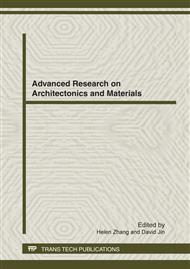[1]
Radushkevich LV, Lukyanovich VM. O strukture ugleroda, obrazujucegosja pri termiceskom razlozenii okisi ugleroda na zeleznom kontakte (about the structure of carbon formed by thermal decomposition of carbon monoxide on iron substrate). Zurn Fisic Chim 1952;26:88–95.
Google Scholar
[2]
Monthioux M, Kuznetsov VL. Who should be given the credit for the discovery of carbon nanotubes? Carbon 2006;44(9):1621–3.
DOI: 10.1016/j.carbon.2006.03.019
Google Scholar
[3]
T. Belytschko, S.P. Xiao, G.C. Schatz, R. Ruoff, Atomistic simulations of nanotube fracture, Phys. Rev. B 65 (23) (2002) 235430–235437.
DOI: 10.1103/physrevb.65.235430
Google Scholar
[4]
J.P. Salvetat, J.M. Bonard, N.H. Thomson, A.J. Kulik, L. Forro, W. Benoit, et al., Mechanical properties of carbon nanotubes, Appl. Phys. A 69 (3) (1999) 255–260.
DOI: 10.1007/s003390050999
Google Scholar
[5]
Ko F, Gogotsi Y, Ali A, Naguib N, Ye H, Yang G. Electrospinning of continuous carbon nanotube-filled nanofiber yarns. Adv Mater 2003;15(14):1161–5.
DOI: 10.1002/adma.200304955
Google Scholar
[6]
Coleman JN, Khan U, Blau WJ, Gunko YK. Small but strong: a review of the mechanical properties of carbon nanotube–polymer composites. Carbon 2006;44:624–52.
DOI: 10.1016/j.carbon.2006.02.038
Google Scholar
[7]
Yazdanbakhsh A, Grasley Z, Tyson B, Abu Al-Rub RK. Carbon nanofibers and nanotubes in cementitious materials: some issues on dispersion and interfacial bond. ACI Special Publication 2009;267:21–34.
DOI: 10.1061/(asce)mt.1943-5533.0000266
Google Scholar
[8]
Makar J, Margeson J, Luh J. Carbon nanotube/cement composites – early results and potential applications. In: Banthia N, Uomoto T, Bentur A, Shah SP, editors. Proceedings 3rd international conference on construction materials: performance, innovations and structural implications. Vancouver: UBC Press; 2005. p.1–10.
Google Scholar
[9]
Vaisman L, Wagner HD, Marom G. The role of surfactants in dispersion of carbon nanotubes. Adv Colloid Interface Sci 2006;128–130:37–46.
DOI: 10.1016/j.cis.2006.11.007
Google Scholar
[10]
G.Y.Li,P.M. Wang,X.Zhao,Mechanical behavior and microstructure of cement composites incorporating surface-treated multi-walled carbon nanotubes,Carbon 43(2005)1239–1245.
DOI: 10.1016/j.carbon.2004.12.017
Google Scholar
[11]
A.Cwirzen K.H. Cwirzen,V.Penttala,Surface decoration of carbon nanotubes and mechanical properties of cement/carbon nanotube composites, Adv. Cement Res. 20(2008) 65 – 73.
DOI: 10.1680/adcr.2008.20.2.65
Google Scholar
[12]
A.Chaipanich,T.Nochaiya,W.Wongkeo,P.Torkittikul,Compressive strength and microstructure of carbon nanotubes–fly ash cement composites, Mater. Sci.Eng.A 527(2010) 1063–1067.
DOI: 10.1016/j.msea.2009.09.039
Google Scholar
[13]
Hilding J,Grulke EA,Zhang ZG,Lockwood F.Dispersion of carbon nanotubes in liquids. J Disper Sci Technol 2003;24(1):1–41.
DOI: 10.1081/dis-120017941
Google Scholar
[14]
Bae J,Jang J,Yoon SH.Cure behaviour of the liquid-crystalline epoxy/carbon nanotube system and the effect of surface treatment of carbon fillers on cure reaction.Macromol Chem Phys 2002;203(15):2196–204.
DOI: 10.1002/1521-3935(200211)203:15<2196::aid-macp2196>3.0.co;2-u
Google Scholar
[15]
Liu L,Barber AH,Nuriel S,Wagner HD.Mechanical properties of functionalized carbon nanotube/PVA nanocomposites.Adv Funct Mater 2005;15:975.
DOI: 10.1002/adfm.200400525
Google Scholar


